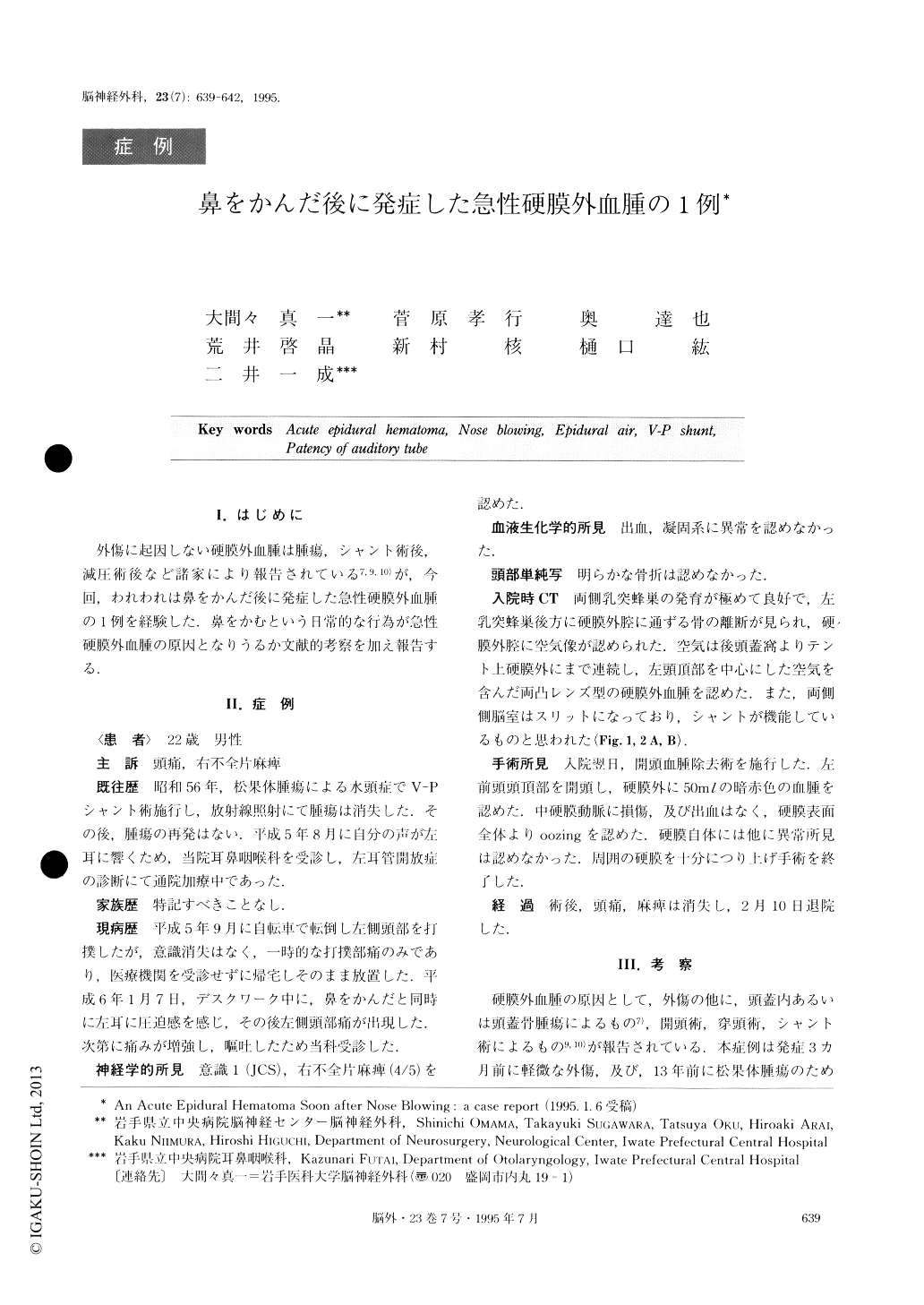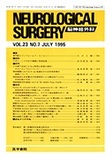Japanese
English
- 有料閲覧
- Abstract 文献概要
- 1ページ目 Look Inside
I.はじめに
外傷に起因しない硬膜外血腫は腫瘍,シャント術後,減圧術後など諸家により報告されている7,9,10)が,今回,われわれは鼻をかんだ後に発症した急性硬膜外血腫の1例を経験した.鼻をかむという日常的な行為が急性硬膜外血腫の原因となりうるか文献的考察を加え報告する.
We reported a very rare case of an epidural hemato-ma soon after nose blowing.
A 22-year-old male visited our hospital complaining of severe headache and nausea soon after he blew his nose. Thirteen years ago, he had a ventriculo-peritoneal (V-P) shunt operation for a pineal region tumor which had not recurred after irradiation. His left auditory tube had been patent. He hit his head about 3 months ago. On his arrival, his consciousness was almost clear but we observed slight right hemiparesis. Computed tomo-graphy of his head obtained on the first day showed the air in the hematoma in the left parietal epidural space which penetrated his petrosal bone from the mas-toid air cells. Removal of his epidural hematoma was performed the next day and there was no abnormality of his parietal bone, dura and meningeal arteries. We supposed that nose blowing was what triggered his epidural hematoma. From pressure of nose blowing, the air of his nasopharyngeal space passed through his patent auditory tube into the tympanic cavity, and en-tered into the epidural space penetrating a microfrac-ture or dissociation in the petrosal bone. In addition to this, V-P shunt system and the looser adhesion of dura to the skull in the young promoted entrance of air. Associated with formation of epidural hematoma in this case were four factors,“patency of auditory tube”,“de-fect or microfracture of petrosal bone”,“V-P shunt”, “younger age” and triggered by nose blowing.

Copyright © 1995, Igaku-Shoin Ltd. All rights reserved.


